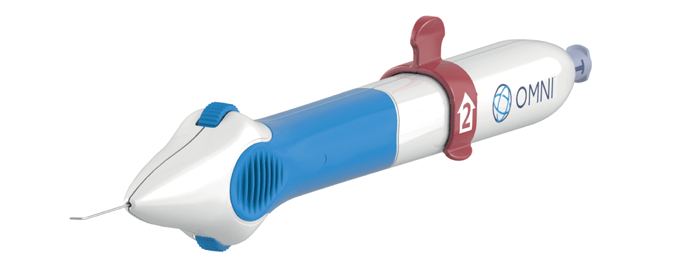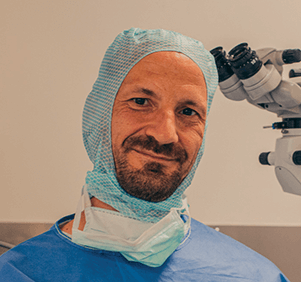Time is often the sea in which medical devices truly sink or swim. Demonstrating efficacy through clinical trials doesn’t necessarily guarantee that an innovation will find its way into a clinician’s armamentarium, a product must prove itself over time – again and again. And that’s where the OMNI surgical system stands out from the crowd when it comes to glaucoma treatment. The OMNI is a MIGS device used by many institutions for treating their glaucomatous patients, including at the Augencentrum Köln – a large practice in Cologne, Germany, with 11 ophthalmologists all specializing in ophthalmic surgery, including cataract, refractive, vitreoretinal and glaucoma surgery. As a practice with a long history of performing canaloplasty, the Augencentrum Köln was presented with the opportunity to use the first-generation precursor to the OMNI device in 2015 – an offer that they rushed to accept. And they have been using it – through numerous iterations and advances – ever since.

The OMNI system has a number of benefits for both surgeons and patients. It is a device that targets all three points of resistance in the outflow system: the trabecular meshwork, Schlemm’s canal, and the collector channels. Trabecular-bypass implants target only one or two points of resistance; moreover, they are left behind in the eye, limiting the clinician’s options for subsequent glaucoma procedures and risking possible future complications.
As Dr Simon Ondrejka, cataract and glaucoma specialist at Augencentrum Köln explains, the results speak for themselves. Since first adopting the OMNI system in late 2015 as an alternative to their standard ab-externo approach, the Augencentrum Köln practice was astonished by the effectiveness of this tool.
In 2022 Ondrejka published his results showing the long-term safety and effectiveness with the OMNI system and its precursor the VISCO360 (1). This study showed a reduction in mean IOP from a baseline of 21.1 ± 8.8mmHg to follow-up at 36 ±6 months of 15.5 ± 3.0 mmHg with 58% of the full cohort remaining medication free through 36 ±6 months. Even among the group of patients that remain on medication, mean medications remained below one at 36 ±6 months compared to two pre-operatively. The durable efficacy and favourable safety profile demonstrated after 36 months of follow-up impressed the Augencentrum Köln team; more practically, it also reduced the number of ab-externo procedures they needed to perform.
 Dr Simon Ondrejka
Dr Simon Ondrejka
How can you ensure that you benefit from the same surgical success as the Augencentrum Köln? Ondrejka explains that, although having the right tools is essential, having the right knowledge to get the most out of them is just as crucial. “I think the most important thing is knowing the anatomy. Everyone who wants to start doing angle-based surgery should be performing as many gonioscopic examinations as they can in their daily routine. They need to know the structures of the angle, and to look for the scleral spur because when you are in surgery and the tension is high, you need to know what and where to address immediately,” he says. “The second thing that makes the approach much easier: ensuring intracameral stability of the cannula against the trabecular meshwork. It’s much easier to create a good opening, as the catheter will find its way more easily into the canal. Being hesitant when it comes to opening the trabecular meshwork actually makes it more difficult to do the surgery.”
The results that continue to come out of Augencentrum Köln’s glaucoma department are the perfect reminder of the brilliance that can be achieved and sustained over time, when the right tools make it into – and remain in – the right hands.
IMPORTANT PRODUCT INFORMATION:
INDICATIONS FOR USE: The OMNI® Surgical System is indicated for the catheterization and transluminal viscodilation of Schlemm’s canal and the cutting of trabecular meshwork to reduce intraocular pressure in adult patients with open-angle glaucoma. For important safety information including contraindications, warnings, precautions and adverse events, please visit omnisurgical.com
Dr. Ondrejka is a paid consultant of Sight Sciences
Disclaimer:
This information is intended solely for the use of ophthalmic clinicians - Patients should contact their eyecare professional.
CE2797
© 2023 Sight Sciences, Inc 6/23 OM-2934-OUS.v1
References
- S Ondrejka ,et al., Long-term effect of canaloplasty on intraocular pressure and use of intraocular pressure-lowering medications in patients with open-angle glaucoma. J Cataract Refract Surg. 48(12), 1388 (2022) PMID: 35796586.
